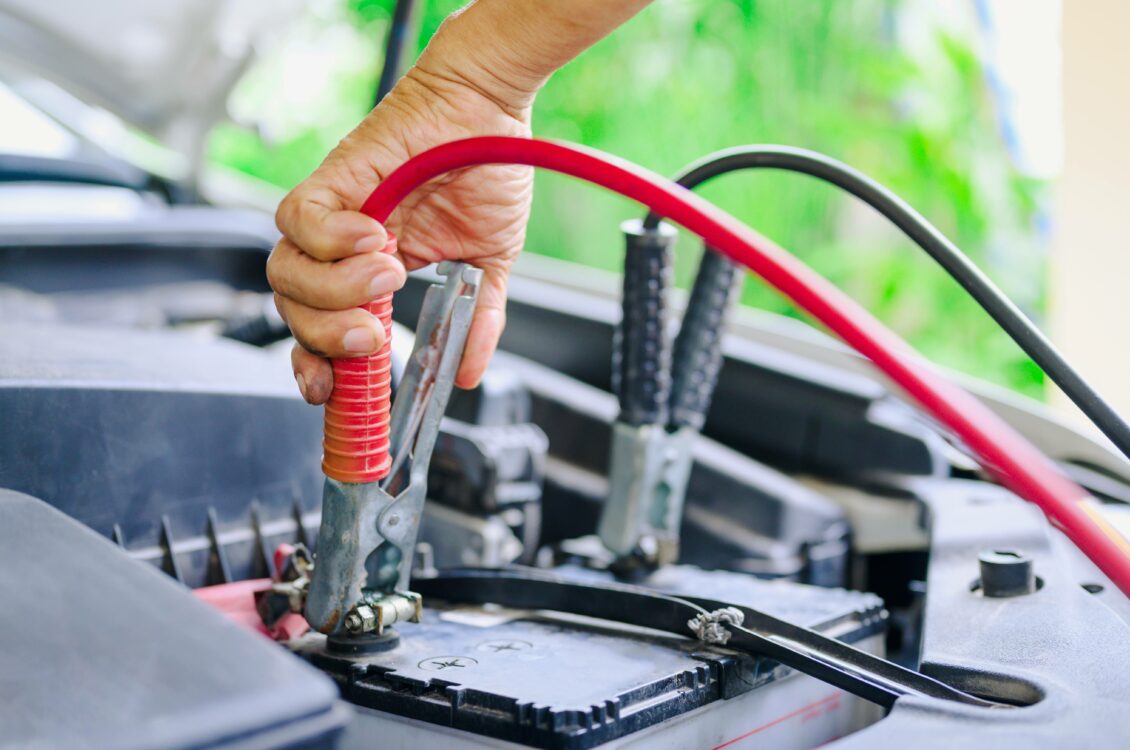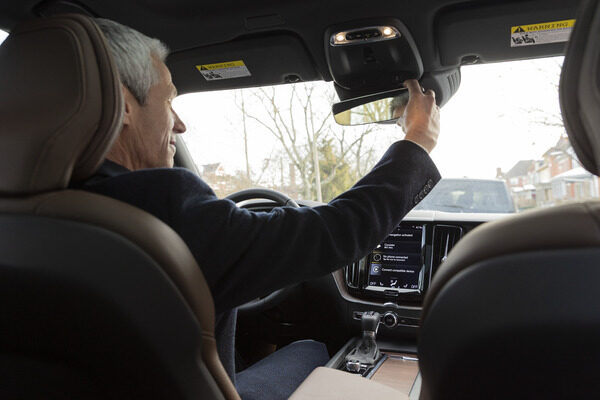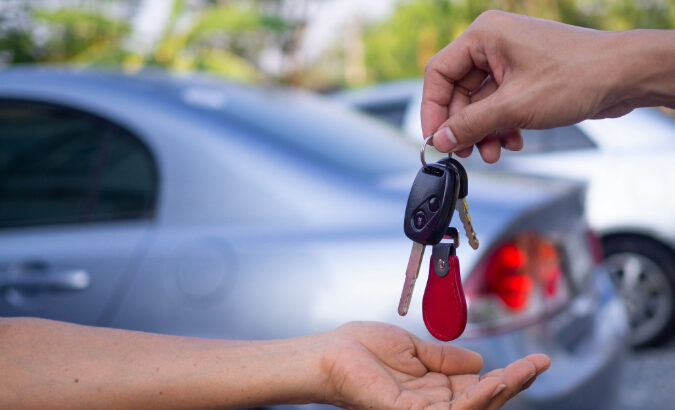
When your ride suddenly won’t start from a dead battery, knowing how to use jumper cables is a good skill to have. At first, jump-starting a car can seem like a stressful situation, but you’ll quickly realize it’s one of the easiest ways to start your vehicle. To bring your battery back to life, all you need is jumper cables and another vehicle with a working battery. Find out how to start a car with these steps below.
What is jump-starting?
Jump-starting is the act of starting a car with a drained battery via connection to an external power source. In most cases that power source is another car. This is done by attaching jumper cables to the terminals of the dead battery and connecting them to the terminals of a working car’s battery. [1]
Steps to jump a car
1. Review your owner’s manual
Safety should be a priority whenever you’re working under the hood, so always review your owner’s manual before you start hooking up any cables. Your vehicle’s manufacturer will provide specific recommendations and safety precautions to follow when jump-starting. [1]
2. Position the working vehicle
When you’re ready to jump-start your car, you’ll want to position the vehicle with the working battery close enough to your car’s engine so that you can connect jumper cables. If possible, park the working car so that it faces yours, as if each car’s headlights are “staring” at each other. Keep the vehicles about 18 inches apart and make sure they don’t touch. Put both cars in park (or neutral for cars with manual transmission) and remove the keys. [1]
3. Attach the jumper cables
Now that everyone’s parked, it’s time to pop open the hoods and attach the jumper cables. Note the positive and negative terminals on your battery; typically, they’re represented by a + (positive/red) sign and a – (negative/black) sign. Your jumper cables will also have positive/red clamps and negative/black clamps. [1]
For safety purposes, there’s an exact process you need to follow when attaching the cables. Here’s how to use jumper cables: [2]
- Attach the positive/red cable clamp to the dead battery’s positive terminal. Make sure the connection is sturdy.
- Attach the other positive/red cable clamp to the working battery’s positive terminal.
- Attach the negative/black clamp to the working battery’s negative/black terminal.
- Connect the other negative/black clamp to a ground on the vehicle with the dead battery. This can be any unpainted metal surface away from your battery, such as a bolt or engine block. Whatever you do, never connect this clamp to the dead battery’s negative terminal — doing so can potentially cause sparks, which could ignite battery gases and result in the battery exploding. [3]
4. Start the working vehicle
With the jumper cables firmly attached, start the car with the working battery and let it run for a few minutes. [1]
5. Start the dead vehicle
After the car with the working battery has been running for a few minutes, start the car with the dead battery. If it turns on, let it run for at least 20 minutes to allow the battery to recharge. [2]
6. Disconnect the jumper cables
If your vehicle was successfully revived, you can now disconnect the jumper cables. Remove the cables in the reverse order they were attached, as follows: [2]
- Negative/black clamp from the previously dead car
- Negative/black clamp from the helper car
- Positive/red clamp from the helper car
- Positive/red clamp from the previously dead car
As you disconnect the jumper cables, make sure the detached clamps don’t touch each other while another clamp is still attached to the vehicle. This can create a major spark that could cause serious injury. [3]
How not to jump a car
While jump-starting a car can usually be a relatively simple process, there are several things you’ll want to avoid: [3]
- Don’t tap the free ends of the cables together while the other ends are connected to the battery; this can cause sparks which can be dangerous
- Don’t connect a positive cable to a negative terminal or a negative cable to a positive terminal; this can result in a tremendous spark that may cause burn injuries
- Don’t jump a hybrid vehicle without wearing heavy-duty insulated gloves; these cars carry a higher voltage than other vehicles, and any current sent through the human body could be lethal. Make sure you strictly adhere to manufacturer instructions when jumping a hybrid car
How long does it take to jump a car
You can jump your car in a matter of minutes. Once you’ve connected your car’s battery to one in a working vehicle, allow your car to run for at least 20 minutes to finish recharging your battery before shutting your car off. [2]
What to do if the car doesn’t jump-start
If your car doesn’t jump-start, check your cable connections and try again. A slightly loose clamp can sometimes prevent a successful jump-start. Corrosion or dirt on the battery terminals may also prevent a good connection.
In the event jump-starting still doesn’t work, you’re probably dealing with a bigger problem. A number of issues could be at hand here, such as a faulty alternator or an old battery that needs replaced. Contact your local mechanic for assistance. (Learning how to extend the life of your car battery will also help for future reference.)
For those times you need a jump-start and can’t do it yourself, being able to call someone for help can be a huge life-saver. See all the ways roadside assistance can give you a hand when you and your vehicle are in a bind.
[1]magazine.northeast.aaa.com/daily/life/cars-trucks/jumping-a-car-battery/
[2]consumerreports.org/car-batteries/jump-start-car-with-dead-battery/
[3]itstillruns.com/happens-car-jumping-touch-cables-together-cause-spark-12199331.html
Disclaimer:
The information included here is designed for informational purposes only. It is not legal, tax, financial or any other sort of advice, nor is it a substitute for such advice. The information may not apply to your specific situation. We have tried to make sure the information is accurate, but it could be outdated or even inaccurate in parts. It is the reader’s responsibility to comply with any applicable local, state or federal regulations. Nationwide Mutual Insurance Company, its affiliates and their employees make no warranties about the information nor guarantee of results, and they assume no liability in connection with the information provided. Nationwide and the Nationwide N and Eagle are service marks of Nationwide Mutual Insurance Company. © 2022 Nationwide



